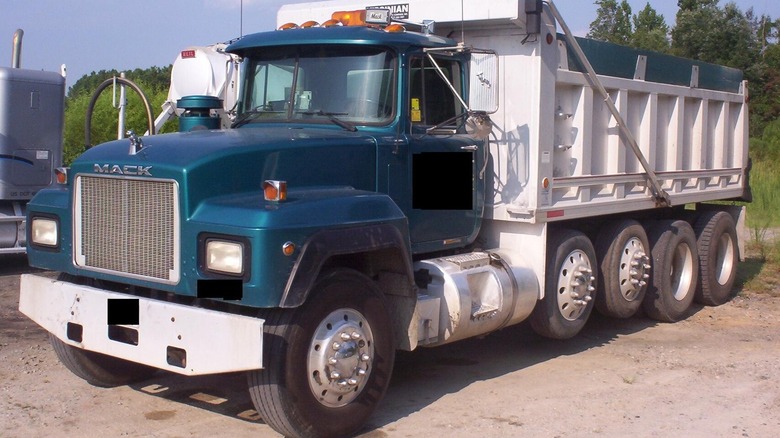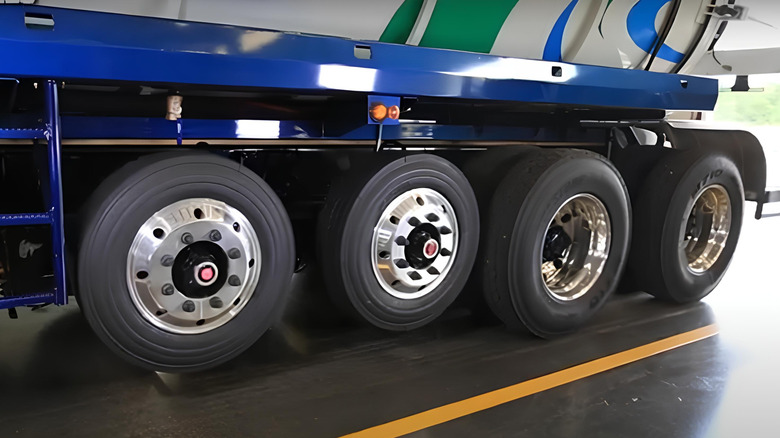Why Do Some Trucks Have Tires That Don't Touch The Ground?
There's a chance you've seen a larger truck driving down the highway with some of its tires hovering above the ground. It may look odd at first, but there is a practical reason behind this design. Those elevated tires are called "lift axles," and they can be lowered or raised as needed. When hauling heavy cargo, the drop or lift axle is lowered to provide extra support and spread the weight evenly over more wheels, which helps to ensure compliance with road weight regulations. Conversely, when the truck is unloaded or transporting a lighter load, the lift axle is raised to reduce friction and improve fuel efficiency.
Typically, the driver controls the lift axle via an air suspension system inside the truck. Some systems even automatically drop or raise the lift axles based on the truck's load. Beyond weight management, lift axles also enhance maneuverability. The larger the truck, the harder it is to steer, and having more tires in contact with the road can make turning even more difficult. So by lifting unneeded tires, the truck becomes more agile, allowing for smoother turns in tight loading docks, construction zones, and other confined spaces.
The different types of lift axles
Lift axles come in different types, with pusher and tag axles being the most common. The main difference between them is their position on the truck. A pusher axle goes in front of the drive axles and boosts the truck's payload capacity. A tag axle, on the other hand, is set behind the drive wheels, near the rear of the truck. It helps balance the load and minimize pressure on the main tires. Both pusher and tag axles are commonly used in heavy-duty vocational trucks such as concrete mixers, refuse trucks, and tanker trucks. However, it's worth noting that neither pusher nor tag axles, or lift axles in general, propel the truck forward — only the drive axles do.
Lift axles can also be either steerable or non-steerable. When lowered, steerable lift axles pivot with the truck as it moves, so they make corners easier to navigate. In contrast, non-steerable axles remain fixed in place and do not turn with the truck, which can lead to increased tire scrubbing and added stress on the vehicle's frame when turning.

